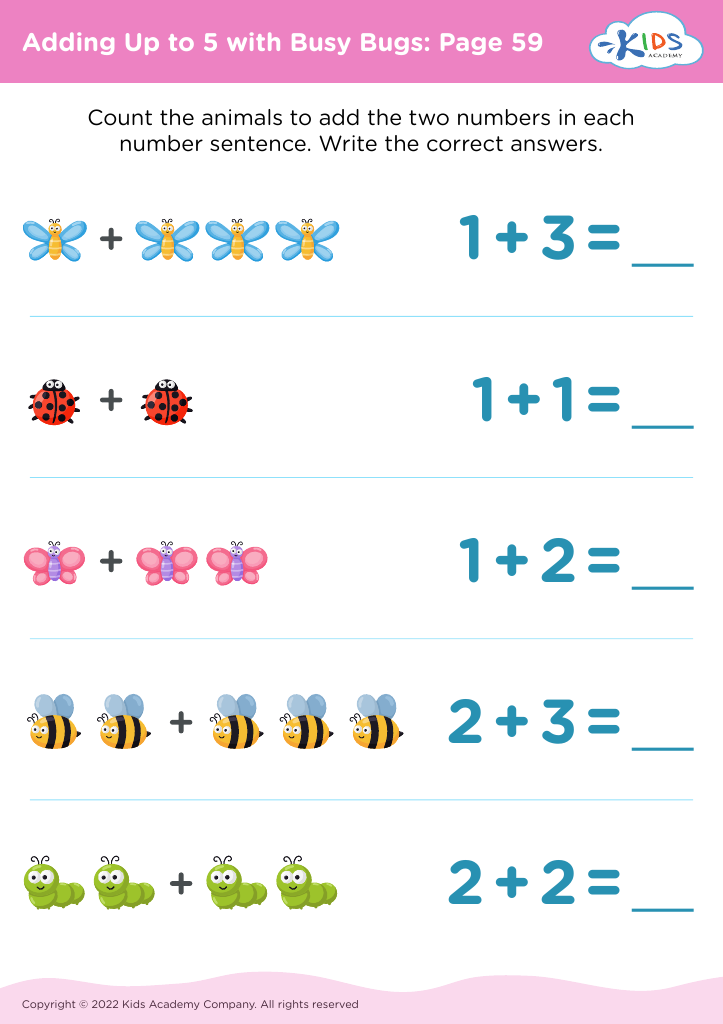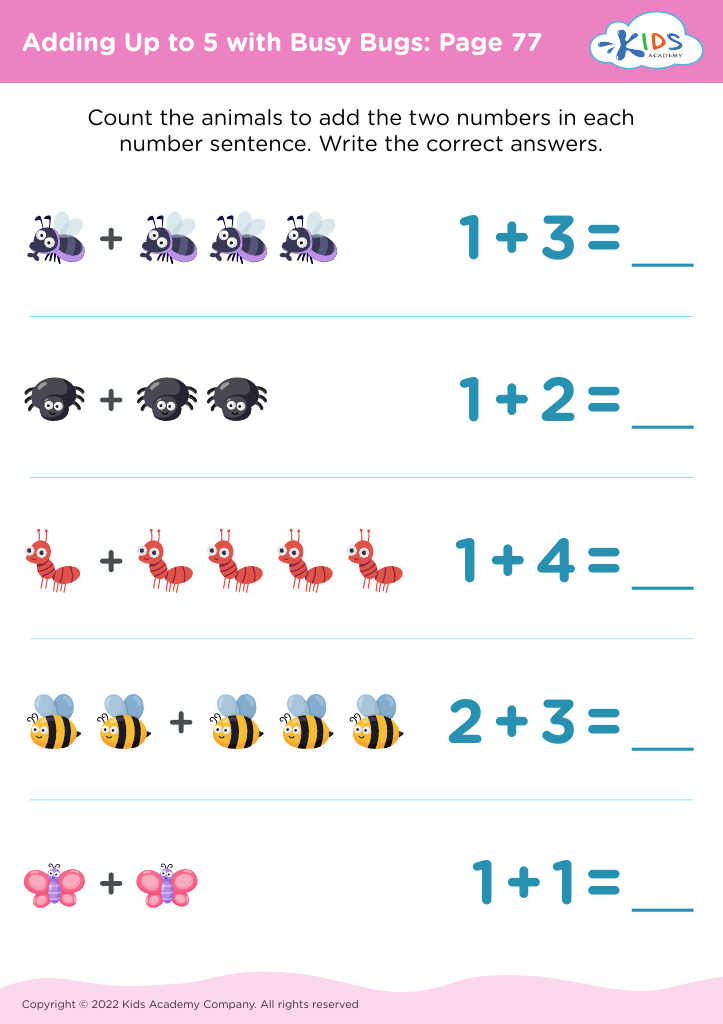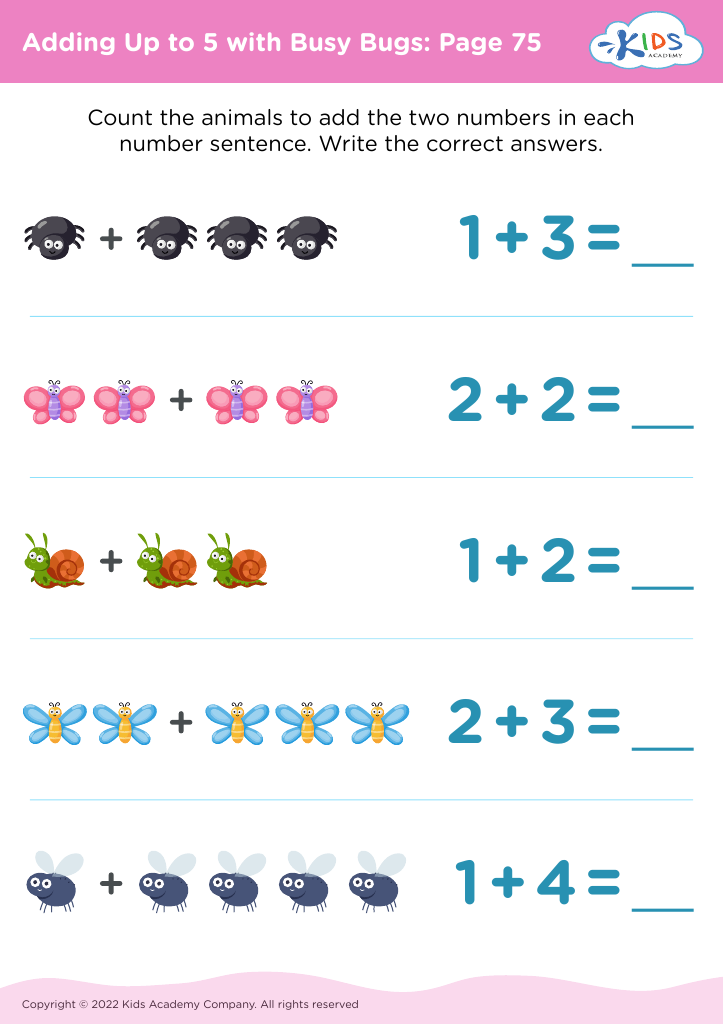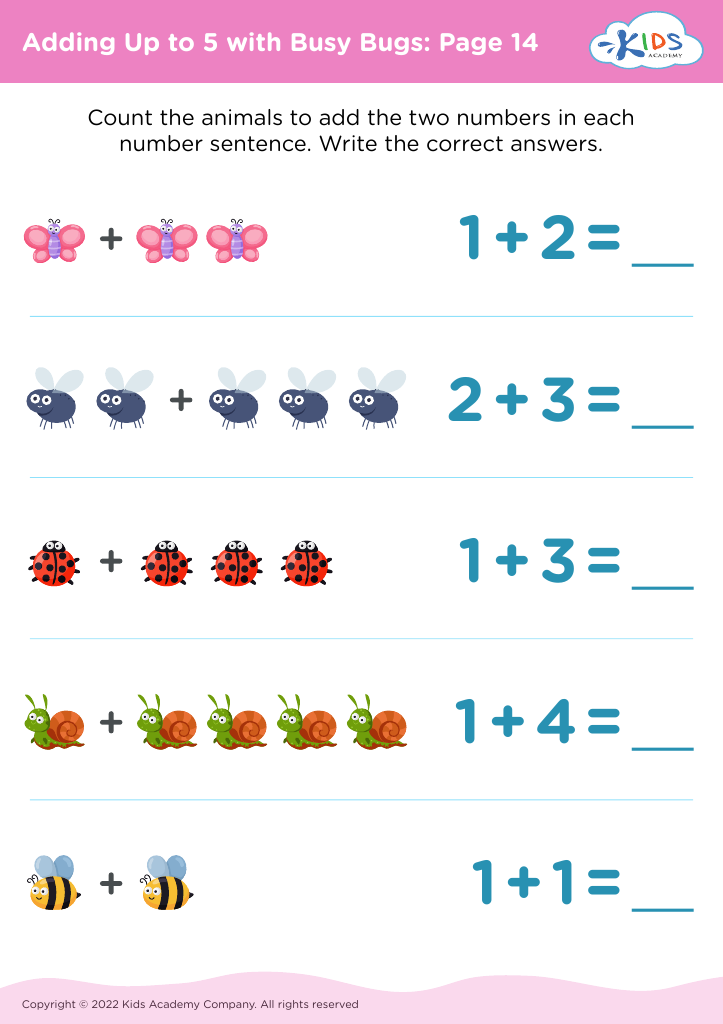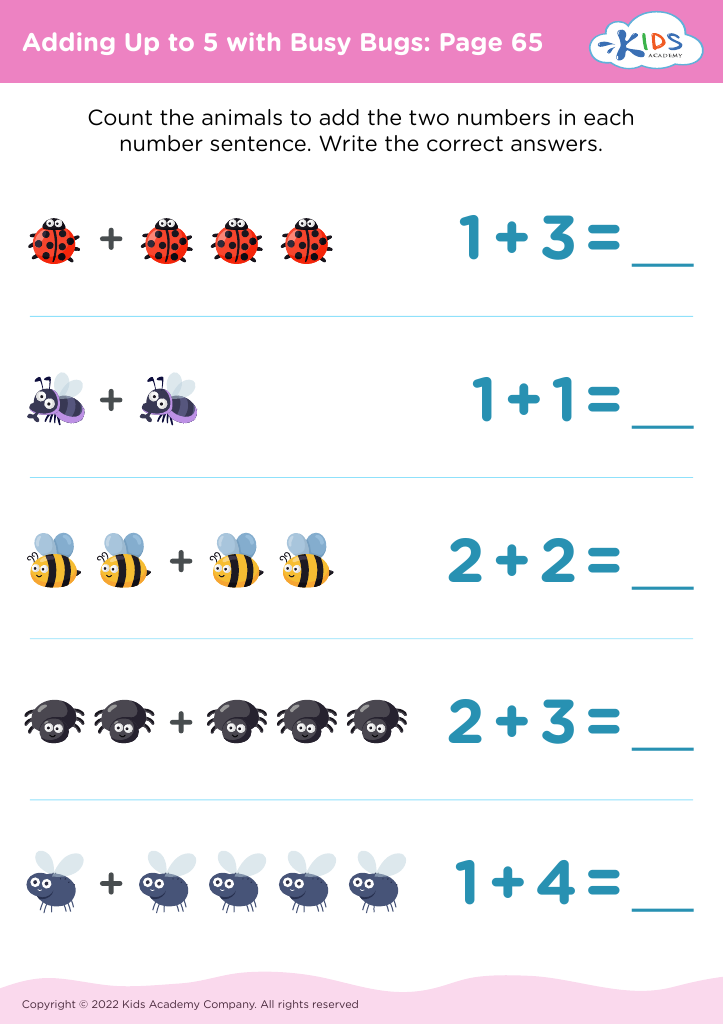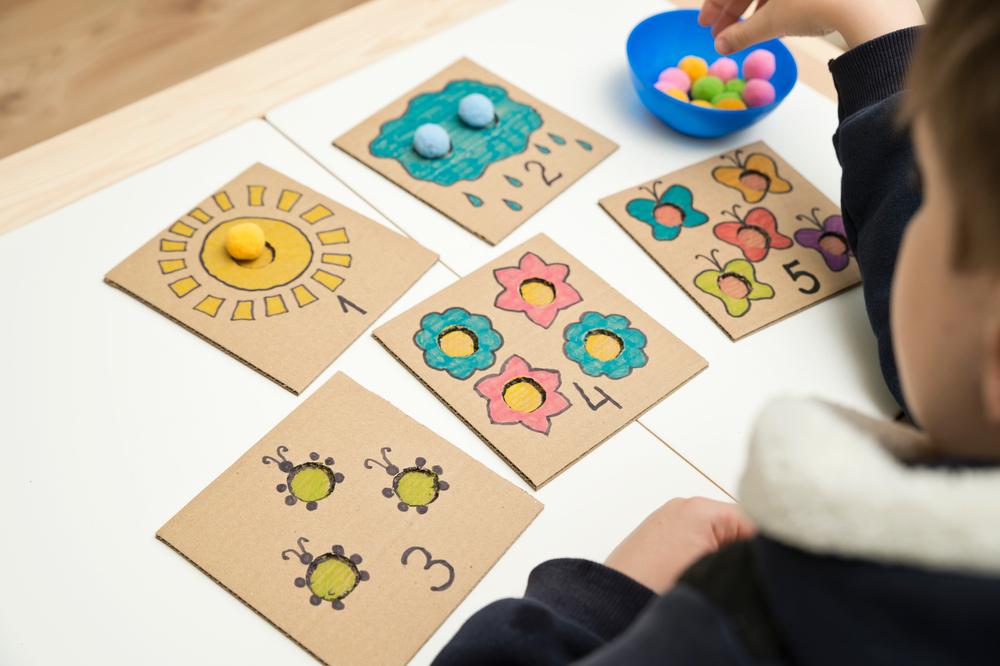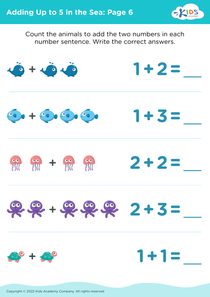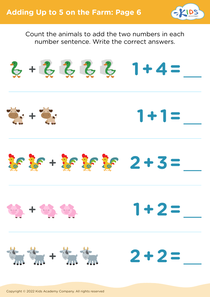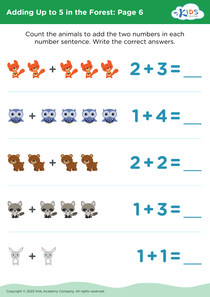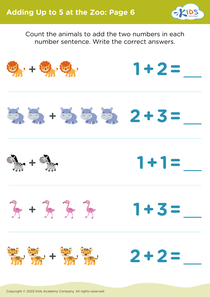Fine motor skills (writing) Adding with Busy Bugs Worksheets for Ages 3-8
5 filtered results
-
From - To
Boost your child's fine motor skills and math abilities with our "Adding with Busy Bugs Worksheets" for ages 3-8! These engaging and educational worksheets are designed to improve handwriting skills while making math fun and interactive. Kids will practice addition by counting and summing cute, colorful bug illustrations, promoting both numerical understanding and fine motor development. Perfectly suited for young learners, these activities enhance pencil grip, hand-eye coordination, and precise movement. Make learning a delightful adventure with Busy Bugs, and watch your child's confidence flourish as they master the basics of math and writing.
Parents and teachers should care about developing fine motor skills in children ages 3-8, as these skills are essential for everyday tasks and foundational for academic success. Fine motor skills refer to the coordination between small muscles, like those in the hands and fingers, and the neurological system. Activities like writing require dexterity, hand-eye coordination, and control, which are nurtured by engaging children in tasks specifically designed to enhance these skills.
Incorporating tools like "Busy Bugs" into learning can make developing these skills fun and interactive. "Busy Bugs" are typically colorful, engaging manipulatives that children can sort, count, and use in various educational activities. Using these bugs for tasks such as adding can help children practice number recognition, counting, and basic arithmetic within a tactile and visually stimulating environment, further enhancing their cognitive abilities.
More importantly, the precise actions required to pick up, move, and place these small items help to strengthen the fine motor components crucial for effective handwriting. As children manipulate these bugs, they improve their grasp, control, and coordination, directly impacting their ability to hold and use writing tools effectively. This foundational skillset not only supports their academic journey but also daily tasks, boosting their confidence and independence. Through such engaging, hands-on activities, children can develop fine motor skills in a meaningful and enjoyable context.
